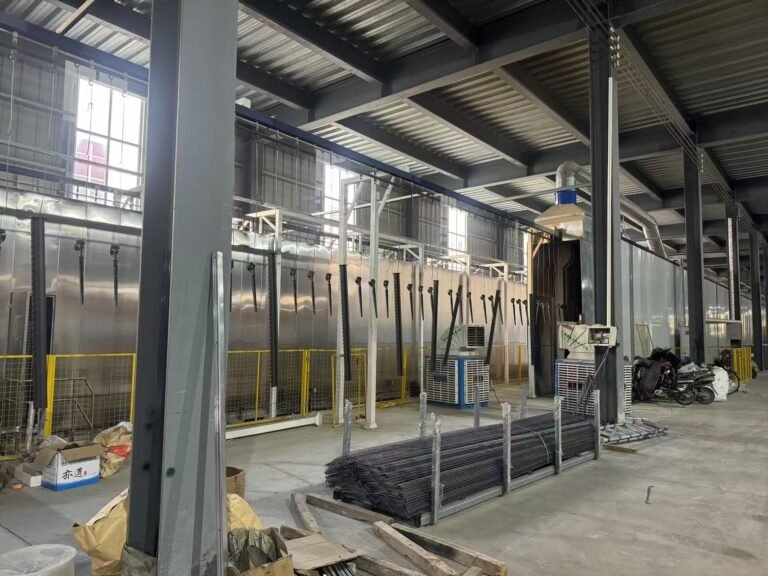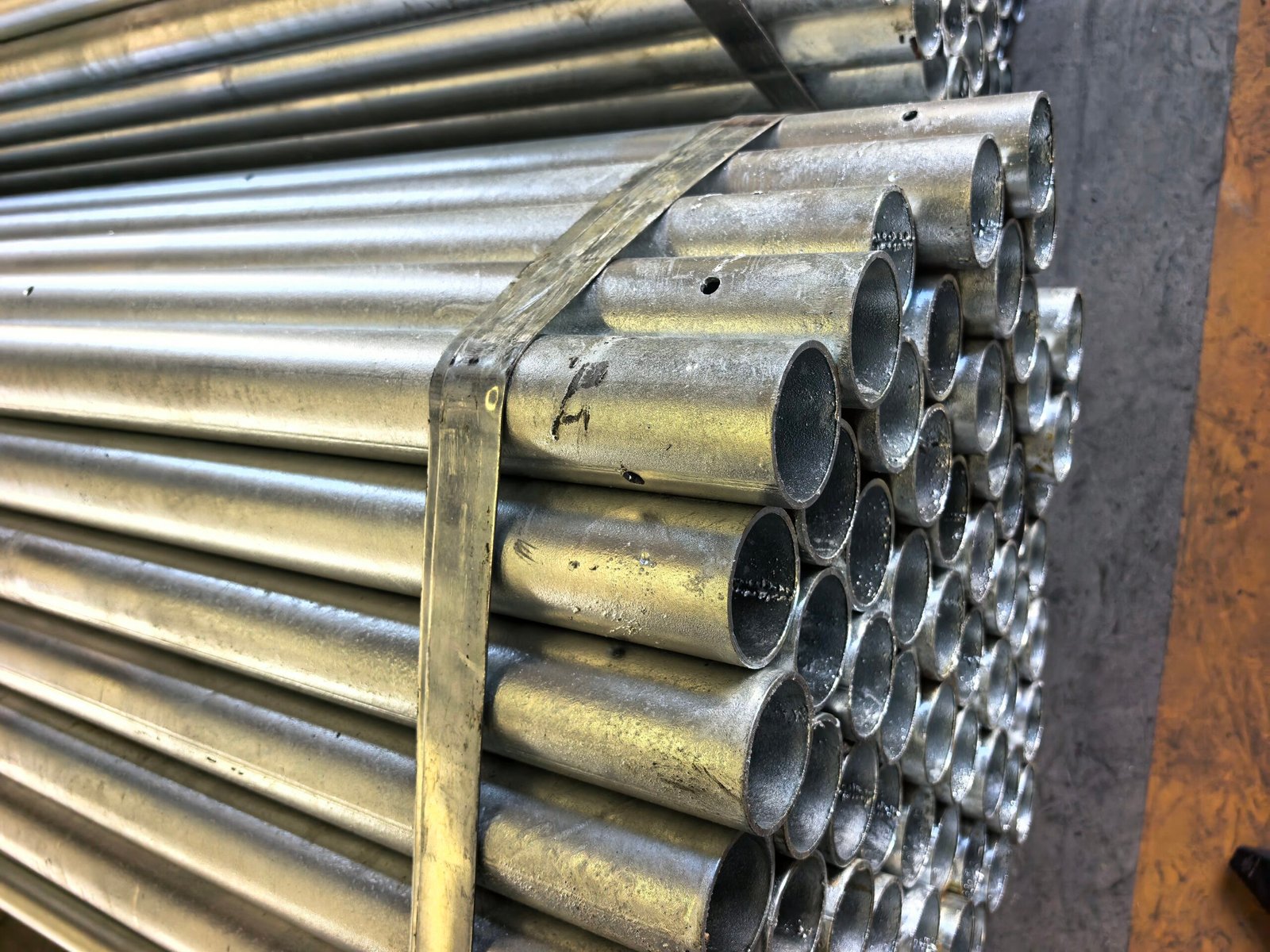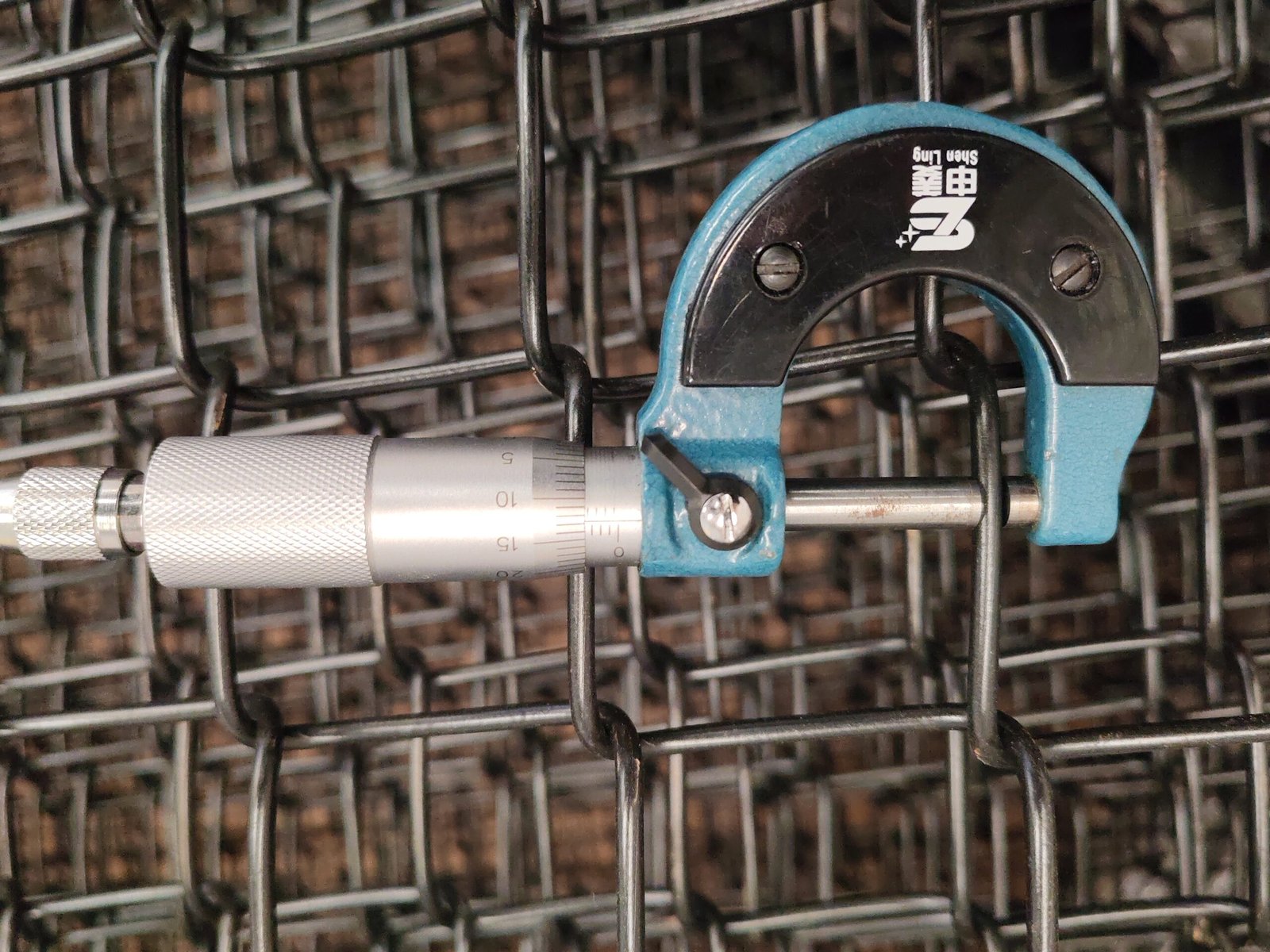Table of Contents
ToggleFabricating process for 2DG Metal Fence Mesh & Profiled Posts B
Making cold drawn steel wires
Cold Drawn Steel Wire is the essential starting point in the fabrication of high-performance wire mesh fencing. Manufactured by pulling hot rolled steel wire rods through precision dies at room temperature, this process significantly enhances the wire’s tensile strength, dimensional accuracy, and surface finish.
Steel wire standards used in (2D Welded Wire Fence)
Steel wire used in 2D welded wire fences is manufactured to meet key international galvanizing and coating standards, ensuring strength, corrosion resistance, and long service life in diverse environments. In the USA, wires comply with ASTM A641 for high-strength steel wire with a uniform zinc coating and ASTM A123 for hot-dip galvanizing of structural components. In the EU and UK, compliance with EN 10244-2 for metallic coatings and EN ISO 1461 for galvanizing guarantees long-term durability under varied climatic conditions. For Australia/New Zealand, wires follow AS/NZS 4534 for zinc and zinc-alloy coatings and AS/NZS 4680 for hot-dip galvanizing, providing enhanced protection against intense UV exposure and marine corrosion. Meeting these standards directly ensures that 2D welded wire fences deliver consistent quality, structural integrity, and reliable performance in global markets.
Welding steel wires
After producing high-strength Cold Drawn Steel Wire, the next critical stage in wire mesh fence manufacturing is Welding Wire Mesh. This step involves accurately positioning longitudinal and transverse wires, then fusing them at their intersections using automated resistance welding machines. The result is a rigid, uniform mesh grid with consistent spacing and excellent strength.
Welding steel wires standard
The welding of steel wires using automatic resistance spot welding complies with key international standards, ensuring global acceptance and high performance. Relevant benchmarks include ASTM A185/A185M (Welded Steel Wire Fabric for Concrete Reinforcement) and ASTM A641/A641M (Zinc-Coated Carbon Steel Wire) for the U.S. market; EN 10223-4 (Steel Wire and Wire Products – Welded Mesh Fencing) for Europe; BS 4482 (Steel Wire for Reinforcement) for the UK; and AS/NZS 4680 (Hot-Dip Galvanized Coatings) for Australia/New Zealand.
Compliance with these standards guarantees weld strength, bending performance, corrosion protection, and dimensional accuracy, making the product suitable for demanding structural, security, and infrastructure applications worldwide.
Making fence post
The third step in wire mesh fence production is Forming the Fence Post, specifically shaping steel banding into a “H”-Shaped Fence Post. This process begins with high-quality galvanized or cold rolled steel strips, which are precision folded and pressed through custom-designed molds to create the signature “H” profile — named for its rounded, ribbed sides and flat back.
Fence post standard
The use of Q195/Q235 steel processed through cold roll forming ensures excellent structural precision and mechanical performance. Compliance with GB/T 3091 (China), EN 10219 (Europe), ASTM A500 (United States), and AS/NZS 1163 (Australia/New Zealand) guarantees that the product meets rigorous international standards for strength, dimensional accuracy, and weldability. This multi-standard conformity enables broad applicability in global markets, providing confidence in quality, safety, and long-term durability across diverse construction and engineering projects.
Galvanizing
Once the wire mesh panels are welded and the “H”-shaped fence posts are formed, the next crucial step is Galvanizing after fabrication. This process involves coating both the fence panels and posts with a protective layer of zinc.
Galvanizing standard
The galvanizing process complies with major international standards, including ASTM A123/A123M and ASTM A641/A641M (United States), EN ISO 1461 (Europe), BS EN ISO 1461 (United Kingdom), and AS/NZS 4680 (Australia/New Zealand). Adherence to these specifications ensures a uniform, high-quality zinc coating that provides superior corrosion resistance, long service life, and consistent performance in diverse environmental conditions. Meeting these recognized benchmarks also facilitates global market acceptance and guarantees the product’s suitability for demanding structural, industrial, and outdoor applications.
Powder spraying
After galvanizing, the final surface treatment step is Powder Coating—also known as Powder Spraying. This process involves electrostatically applying a dry powder onto the galvanized surface of fence panels and posts, then curing it in a high-temperature oven to form a smooth, durable, and weather-resistant finish.
Powder spraying standard
The coating system meets stringent international quality and durability standards. With a standard thickness of ≥ 60 μm and an optional high-protection range of 80–120 μm, it ensures robust corrosion resistance. Adhesion performance complies with ISO 2409 (Classification 0–1) with no flaking, while impact resistance meets ISO 6272 at ≥ 2.5 Joules. Salt spray testing in accordance with ISO 9227 and ASTM B117 achieves ≥ 500–1000 hours, confirming exceptional resistance to harsh environments. Together, these results guarantee long-term protection, structural integrity, and suitability for demanding industrial, marine, and outdoor applications.
Making cold drawn steel wires
Constructed with cold-formed I-shaped posts and 2D double horizontal wire welded mesh, this fence features a simple and elegant design with dynamic, smooth lines. The integrated design of the post connects to the mesh through dedicated interlocks and anti-theft bolts, allowing the system to adapt seamlessly to uneven terrain and installation at various angles. The product supports both push-type installation and a two-step installation process where posts are installed first, followed by the mesh, ensuring convenience and efficiency… read more.
CONTACT US
WhatsApp: +86 138 1087 4664 Email: info@ChinaFenceMaker.com






